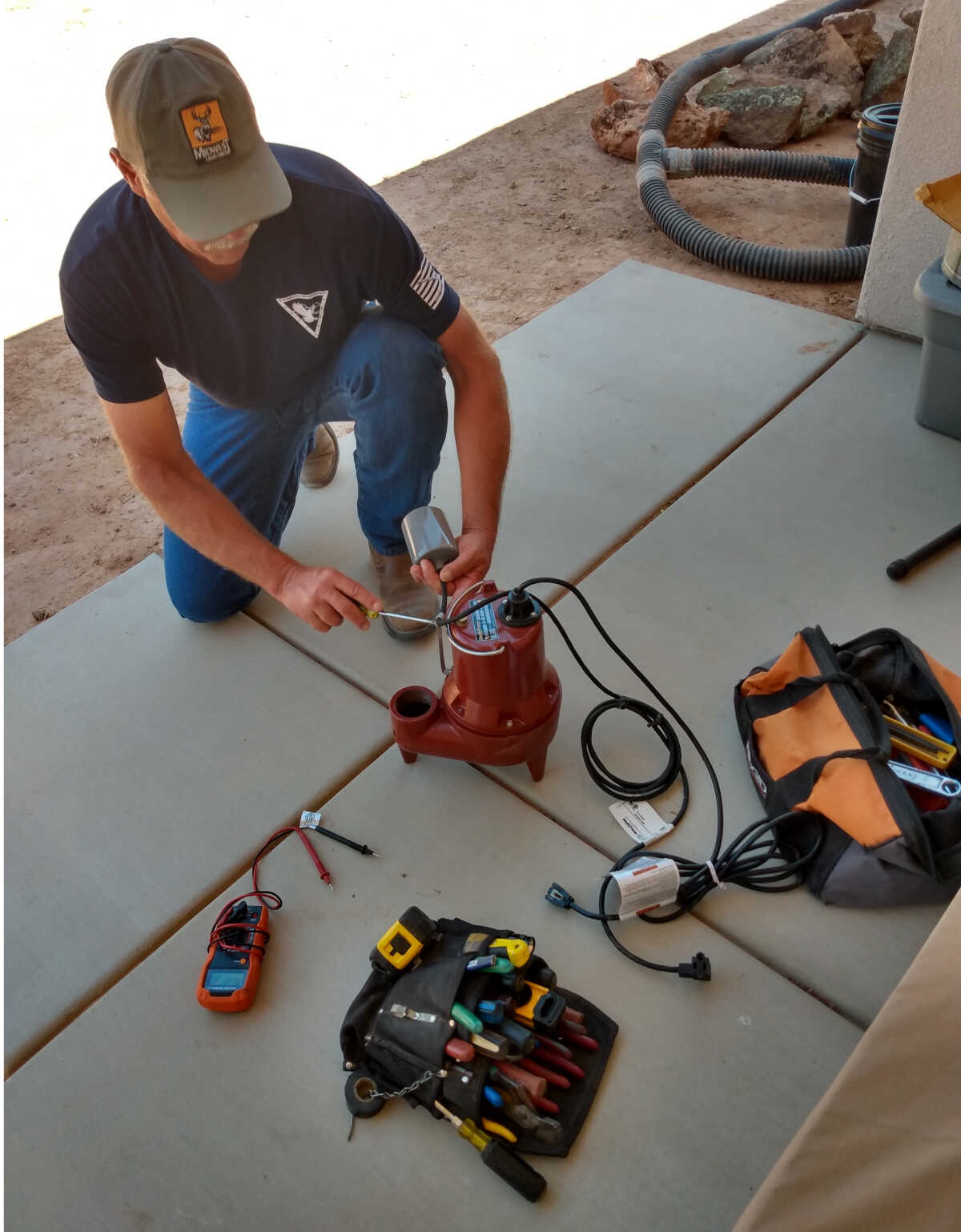DIY Sewage Ejector Pump Installation
There are a number of things to consider when performing a DIY replacement of a sewage ejector pump.
Safety First
You are going to be working in or around water and electricity. Isolate the power source to the pump by simply unplugging the pump cord from the receptacle orturning off the breaker in the house panel.
You are going to be working directly in wastewater that contains bodily fluids, blood and fecal matter. Wear personal protective equipment (PPE).
Glove Up! Protect yourself from exposure to cuts, punctures and abrasions. Wear eye/face protection. You don’t want to be friends with hepatitus A, B or C or a have case of dysentery.
Thoroughly wash your hands and arms after finishing the job. Launder your clothes separately from your family’s clothes.
Still interested in tackling the job? Read on.

“One size fits all” doesn’t apply here
If the pump you’re replacing has been in service for 7 to 10 years or more, try to replace it with the same make and model if possible. All the stars line up here.
If the pump has history of being problematic or has been a headache that keeps you up at night, you need to investigate and determine why.
Possible reasons may be:
- Inferior pump quality
- Pump is not sized properly or is not the right application
- Existing plumbing deficiencies
Every homeowner wants to save money. I get it, however, when it comes to really important items like a sewage pump that serves the whole house or just the lower level of your home, don’t cheap out. You get what you pay for. The couple hundred bucks you saved on the pump will cost you in the long run when you change it out every couple years or sometimes just months after you installed it.
Buy locally from a plumbing supply store. The people that work there are professionals that have worked in the trade and are very knowledgeable about the products they sell. Plus, should you have problems that are warranty issues, you can return it for a replacement. Good luck doing that from an on-line purchase. You’ll soon find out it’s a hassle and you’re out a lot of time and money trying to claim a warranty issue and return a faulty contaminated sewage pump.
Routinely, pump basins are installed in crawl spaces or in storage rooms behind closed doors. Make certain that your pump basin has a high-water alarm. This device monitors the water level of the basin. Should the level rise above normal operating conditions, an audible/visual alarm will sound/illuminate alerting you to a problem with the pump. The alarm panel should be installed in a location where you spend a majority of your time so you can hear it. Keeping it behind closed doors or in a crawl space defeats the purpose of having one. Test it routinely to verify its operation.
Most pump basins are 18” wide x 36” deep. Not much space to accommodate a pump, on/off float switch and alarm float switch. The gravity line (invert) that enters the basin can be installed at various levels. It’s best to orientate the pump in the basin as not to have wastewater falling directly on the float switches causing turbulent conditions or build-up of toilet paper hindering operation.
Adjusting the tether or length of the float switch operation warrants careful consideration. Too much tether can cause the basin level to fill above normal operation and set off the high-level alarm and/or completely empty the basin and not turn off the pump. Operating the pump dry (not pumping liquid) for an extended period will cause mechanical seal damage, ruin the pump and void the warranty.
Too little tether or length will not allow the float switch to freely rise or fall with the water level. Short tethering can cause short run times (short cycling) and reduce the longevity of the pump motor.
After the pump is installed, run clean water into the basin and observe the float switch operation. Switches should rise and fall freely. Stagger them to keep them from touching one another and don’t allow them to touch the side of the basin. Repeat this procedure a half a dozen times until you are confident about switch location.
Unplug the pump and continue to fill the basin and test the alarm switch. You want the alarm to sound off well before the basin floods to give you time to take action, i.e. shut down the washing machine if in use, tell family to stop showering, don’t flush toilets, etc. etc.
If all this sounds daunting and overly complicated, don’t hesitate to call a qualified professional. The price to replace the pump will pale in comparison to the price paid for clean-up of a living area that’s been saturated with sewage.
